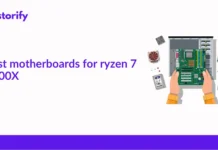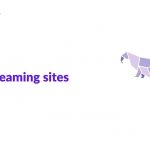The SQL editor is a tool that helps data administrators and web developers to create and run SQL queries. These editors assist you in creating a database connection so that you may access, change, and control the database’s data.
The SQL editor makes it simple and quick to run queries, store data, and analyze data in a database. If you’re going to use a SQL editor, you’ll need to know what SQL is first. You can’t work on SQL unless you understand what it is and why it is used.
Also, keep in mind that while the data you are storing and retrieving in the database is case sensitive, SQL is not.
The following functions are available in SQL Editor:
- In the database, you can cut, copy, paste, undo, redo, and find data.
- Setting up database objects.
- Defining the schema and instance of the database.
- Troubleshooting
- Data validation
- Keywords are highlighted, and performance is tracked.
- The result of a query or a statement.
- User management and analysis
Contents
Online SQL Editors
Online SQL editors have revolutionized database administration and management. These editors have made it much simpler for web developers to maintain and retrieve data wherever and whenever they need it.
Any browser program that is connected to the internet can simply access online editors. To create or manage a database, you do not need to install any software or tools on your local desktop.
You can begin working on an online SQL editor right away by doing the following:
- Open any of the browsers that are installed on your PC.
- In the search engine, type in “Online SQL Editor.”
- Open the tool or editor that you want to work with.
Always keep in mind, however, that the capability of online SQL editors varies. Every online editor does not work in the same manner. Some editors may have more features and capabilities than others, while others may have fewer features.
But there’s still the question of why Online SQL Editor was required.
There are numerous reasons to switch to an online SQL editor, including the following:
- You do not need to download or install software on your own machine. These editors are easily accessible and run in the browser. All you require is an internet connection.
- These editors can be used or accessed at any time and from any location. So, don’t be surprised when you discover the software on your machine. Take a step forward and enter the digital world.
- They are simple to integrate with the database and take less time to do so.
- For intuitive use, several online SQL editors offer interactive interfaces such as DRAG-DROP.
- Because it supports all common types of relational databases, it offers extensive support to users.
- It also gives its consumers access to real-time dashboards where they can get fast insights, reports, and analysis.
The advantages of using an online SQL editor are as follows:
1) It is not confined to a single machine.
If you’re working on SQL with an offline SQL editor, you’ll first need to install software on your machine. Now, if you wish to work from another machine, you must install the same software on that system as well.
However, with an online SQL editor, you can simply and securely access and manage your database from any web browser.
2) User Interface that is Interactive
Online SQL editors, in contrast to other SQL editors, are more comprehensive, interactive, and have a better user experience. PhpMyAdmin is one of the better examples because it has a superb user interface and allows you to do everything in one spot. You may make 3D visualizations, perform ad-hoc SQL reports, and schedule jobs.
3) Provide support for a variety of platforms
Traditional SQL editors were limited to the Windows platform exclusively in the past. Other platforms, such as Mac, Linux, and Unix, are now supported by new online SQL editors. As a result, it just works and progresses, with no excuses.
4) Authentication and Security
High-end security and two-factor authentication are supported by a decent online editor, ensuring that database passwords, usernames, and other data are not accessible to unauthorized users.
5) Flexibility
Other tools and functions must be installed in an offline SQL editor for further functionality and integrity. In the online editor, though, all you need is a browser. These functionalities are already included in these editors, and you can use any browser to access them.
Popular Online SQL Editors
1. Microsoft SQL Server Management Studio

Object explorers, object scripting, script generation, table designer, and query editing using IntelliSense are all included in the toolkit. The platform provides real-time reporting on live query statistics as well as client statistics, allowing you to receive a comprehensive picture of the health of your database. Another useful feature of Microsoft SSMS is that it makes security easier. It includes a vulnerability evaluation as well as unique security features. You’ll have complete control over encryptions this way.
However, as with every product, Microsoft SSMS has a drawback: it does not support Linux or macOS. To put it another way, if you want to use it, you’ll need to make sure that the devices you’re utilizing run on the Windows operating system.
The Integrated Script Editor in Microsoft SQL Server Management Studio has several key features. Microsoft SSMS includes a code editor that works with Transact-SQL, MDX, DMX, and XML/A. It also gives customers access to a large number of templates and custom templates, allowing them to script faster than ever before. To top it off, SSMS includes an integrated source control system that allows you to keep track of script versions as they change.
Object Explorer is a program that allows you to see what the object explorer in this platform allows users to see and manage items across all server types. It offers a hierarchical user interface that makes controlling each server instance simple. For speedier searches, you may even filter objects based on specified criteria.
The Activity Monitor has been updated. Keeping track of everything that happens in your database by hand is practically difficult. This platform’s new activity monitor will log everything for you in real-time for easy tracking, whether it’s data retrieval, deletion, or upgrades, to help you pinpoint changes in your server.
2. MySQL Workbench

The portability of this product will give distributed database architects and developers the advantage they need to optimize their operations while preserving their data. Database migration capabilities are available in MySQL Workbench, making it easy to move data between Microsoft SQL Server, Microsoft Access, Sybase ASE, PostgreSQL, and other RDBMS tables.
Because this program allows developers to visualize their database, modify management options, and undertake database documentation, the risk of human error is decreased. Finally, MySQL Workbench has table editors and results in windows, a SQL snippet panel, and a table data search panel to minimize the need to switch apps.
Visual SQL Editor is a program that allows you to edit SQL data. MySQL Workbench has a visual SQL editor that allows developers to create, amend, and run queries. What’s amazing about this is that you can see how your changes will look before you implement them. Furthermore, thanks to color syntax highlighting, context-sensitive support, and auto-complete, debugging and composing SQL queries can be done significantly faster.
MySQL Workbench also comes with a database administration suite in addition to SQL editing tools. This makes auditing databases, configuring servers, and viewing logs a breeze. It even has a system status function that allows you to quickly monitor key indicators of your MySQL environment’s health, such as security and memory utilization.
Users can examine the status of their queries, client timing, network latency, and index utilization on a dashboard provided by MySQL Workbench. This makes identifying viable ways to improve SQL performance much easier.
3. DbVisualizer

Modules for database object administration, database connection management, query generation, SQL editing, and database server management are all important aspects. Task monitoring, reference graphs, and charting are all standard features.
The product is available for on-premise deployment and has an Open API for integration with other tools in your digital architecture. It integrates with a variety of platforms, including Amazon Redshift, MySQL, Oracle, Yellowbrick, Derby, and MimerSQL.
A free version of the platform is available, with basic but useful capabilities such as a customisable user interface and connection management. Paid plans begin at $197 per month. You can use the free trial to try out the pro versions.
DbVisualizer Dynamic SQL Tools’ Most Important Features The platform has built-in modules for SQL queries, as well as easy editing and execution of SQL statements. These user-friendly tools even allow you to create them without any prior understanding of SQL syntax. You can interact with visual UI tools using simple drag and drop commands.
Coding is a breeze. The SQL editing tool in DbVisualizer contains a built-in error highlighting functionality. As a result, users can immediately detect and address concerns. Furthermore, its autocomplete feature anticipates portions of codes and provides several choices. As a result, the entire process is sped up.
One of the most appealing features of DbVisualizer is that it employs some of the most strict security mechanisms available. They not only use SSH to secure your data, but they also preserve your work so you can resume where you left off. Furthermore, thanks to its monitoring abilities, developers may keep track of and monitor other jobs as well as the state of the system even when working on another project. It serves as a true central center for all database-related operations.
4. Oracle SQL Developer

In addition to these fundamental SQL capabilities, the platform includes an intuitive SQL editor with a built-in unit testing mechanism and a handy version control tool. This allows you to develop and run tests to ensure that your programs are working properly. For better database monitoring and SQL query evaluation,
Oracle SQL Developer Simplified Worksheet’s Key Features Oracle SQL Developer offers a simple SQL editor that allows you to swiftly execute statements and scripts. SQL formatting, script execution recall, tuning advisor, and visual query builder are just a few of its features. It even features an integrated file history and change tracking tool so you can keep track of what’s going on in your database.
This platform features a procedure editor where you may execute, compile, and refactor stored procedures, functions, and triggers as an IDE for SQL development. It also allows for hierarchical profiling, remote debugging, and DB doc documentation.
It doesn’t have to be difficult to gain insight into the actions in your database. With Oracle SQL Developer, you can create bespoke reports utilizing over 50 different charting options and report formats, as well as generate pre-defined reports. This makes it easier and faster to understand the performance of your database.
5. TablePlus

For speedier database navigation, this platform’s interface includes a number of best-in-class capabilities such as inline editing and powerful filters. It also offers a code review and safe mode that allows you to double-check all of your code.
Another excellent advantage of TablePlus is that it is updated weekly to guarantee you get the most up-to-date features. Furthermore, it supports a number of plug-ins, both custom-made and from their library, in case you require features that aren’t included with the platform.
TablePlus was built with SQL best practices in mind. Instant autocomplete, highlight syntax, split windows, SQL query reformatter, favorites, and history are just a few of the features available. You’ll be able to increase productivity and get the most out of your database this way.
The platform comes with a number of security safeguards to help you protect your data. It has support for multi-step authentication, TLS, and native libssh, allowing you to encrypt your connection.
TablePlus was created with ease in mind. It has advanced filters so you can easily find the records you need, as well as export and import options so you can transfer your databases as quickly as possible. You may also use the platform’s code review and safe mode features to test changes to your database before implementing them.
6. Toad for SQL Server

Server synchronization, log readers, SQL optimizers, database objects, and object search are just a few of the key features that Toad for SQL Server has to offer. It has built-in security management and report production options, just like the other platforms on this list.
Toad for SQL Server, on the other hand, has one significant disadvantage: it may be extremely expensive. This implies it’s not a good idea for small and medium-sized firms with limited financial resources.
Toad for SQL Server is designed to make database maintenance and scripting tasks easier and faster. You can use it to automate and schedule repetitive tasks like schema comparisons. This allows you to devote more time to tasks that require more concentration, such as programming and analysis.
Using Toad for SQL Server’s database administration suite, you can ensure that your database is in top shape. This comes with tools that allow you to log file backups, read logs, undo/redo changes, find script differences, and generate synchronization scripts. It also provides a comprehensive view of numerous databases via a single interface.
Management of the development process.
Because of its sophisticated code completion capabilities and simpler SQL formatting options, Toad for SQL Server allows DBAs to work more efficiently. It also includes an organized presentation of scripts, making debugging and comparisons across various servers and instances much easier.
7. dbForge Studio

No matter how complex your programming is, dbForge makes it easier to manage the process of constructing, changing, and restoring databases from one server to another. This is due to its intuitive table designers, which make simultaneous navigation between visual and T-SQL editors much easier. It also comes with a database diagramming tool that makes visualizing the structure of your database items much easier.
Finally, the platform has an interface that allows you to view your objects in both SQL and GUI views in a single window. You can get rid of the requirement to switch screens this way.
Intuitive Database Implementation with dbForge Studio’s Key Features The strength of dbForge Studio is its easy-to-use database design and implementation tools. It will not only assist you in visualizing the relationships between items and databases, but it will also provide coding aid, refactoring, and context-based smart suggestions to help you write SQL code faster.
It also has database comparison capabilities, making it simple to examine changes in the future.
Database maintenance that is proactive. This platform comes with capabilities for tracking server events and SQL performance.
It will be easy to analyze your indexes, resolve fragmentation issues, and guarantee that your databases are performing at their best.
Data analysis is accurate. dbForge Studio, like the other programs on this list, has comprehensive data analysis capabilities. In just a few clicks, you can create sophisticated searches as well as detailed data reports. It also has master-detail browsing and pivot data viewing to make aggregating information and linking user-defined relationships easier.
8. DBeaver

You can use it to do diagramming, SQL editing, and data transfer in real time. It’s wonderful since it lets you swap between databases and servers without leaving the platform. It also allows you to color-code your environments so you can be sure you’re not running queries or updating data on the wrong machine.
Finally, new users will like DBeaver’s simple UI, which includes a conventional grid view and a well-organized text view. It even includes a setup that can be customized for easy navigation.
DBeaver Cross-Database Management’s Key Features. All major database providers are supported by DBeaver, including MySQL, PostgreSQL, MariaDB, SQLite, SQL Server, and MongoDB. This enables users to not only import and export data more quickly, but also to connect databases through a single interface. It even divides your SQL scripts into different tabs so you don’t have to code in another window.
Option to View Data in a Convenient Way. DBeaver has a data view window that allows you to look at your data without having to code it. This makes filtering results and specifying which things you want to update a lot easier. Furthermore, you can immediately input, delete, and change data in the data view pane.
For speedier SQL coding, DBeaver includes a robust yet simple SQL editor with auto-formatting and auto-completion. It also offers a handy function that converts SQL objects into hyperlinks, making it simple to obtain related details with a few clicks.
9. HeidiSQL

HeidiSQL is distinguished by its simple and straightforward graphical user interface, which makes it simple to visually identify the data you require. Different colors are used to indicate different data kinds. Important data can also be favored for a quick and easy approach to find what you need. Users can also use the software to build triggers, schedule events, define user permissions, import and export data between databases, and run SQL searches in bulk.
The sole disadvantage of HeidiSQL is that it is only available for Windows. It will not operate on any other operating system except Linux, where it may be installed using Wine.
Fast SQL Execution is one of HeidiSQL’s most important features. HeidiSQL users can use command line options to speed up task execution. You may even set it up to connect and open files automatically. It also has one-click tools for building WHERE clauses and client-side filtering, making it simple to identify certain values.
You can use HeidiSQL to synchronize data and structures between local and distant databases. This eliminates the need to manually enter similar data and objects.
System that is both light and portable. HeidiSQL provides a simple interface that doesn’t need a lot of computing resources. As long as the device is equipped with one of HeidiSQL’s supported operating systems, it can run on practically any device. The platform also comes with a portable version for your convenience.
10. datapine SQL Editor

The program also features interactive dashboards, which is a nice feature. By creating your own visuals, you may undertake smart data analysis. It comes with a variety of visuals, tables, and diagrams, making it simple to produce interesting and thorough reports.
To top it off, datapine SQL Editor is a browser-based application. There is no need to install it, therefore it won’t take up any space on your devices. Furthermore, you will be able to use your desktop and mobile devices to access this platform.
The drag-and-drop interface is one of datapine’s most distinguishing characteristics. It allows you to receive immediate results by dragging and dropping fields into tables. It can also produce and execute SQL codes automatically, making it perfect for non-programming users.
The ability to generate SQL code automatically has some limitations. Datapine SQL Editor contains an advanced query box designed for expert developers if you need to run more specific queries. They can manually insert codes and even run cross-database queries here.
Another fantastic feature of the datapine SQL Editor is the ability to store or clone your database remotely using the datapine warehouse. This helps you to clear up disk space on your server and speed up the query process even further.
Which SQL Editor is the Best for You
Not all SQL editors are made equal. They’re frequently created with a specific use case in mind. Some editing tools, for example, are designed to work with a certain database system, whilst others are open-source and can work with a variety of systems.
Some aren’t designed to manage many databases, while others can only handle a limited amount of data. Finally, certain SQL tools are free, while others can be expensive. The argument is that there is no such thing as a universal SQL editor.
Remember that knowing the purpose of SaaS solutions in your operations will considerably assist you in determining which is genuinely the best for your business. The same may be said for SQL editors. Finding a platform that matches the bill should be easy if you understand your needs and how these technologies fit into your workflow.
If you’re still having problems deciding on a platform, Microsoft SQL Server Management Studio is a great option. This platform provides a comprehensive set of features that are beneficial to all Windows OS users. It has an integrated architecture and excellent security features. You may safely configure and manage your databases this way.
If you want to learn more about how you may use data to boost your business’s success, look into reputable data analytics tools. These tools, as one of the most extensively used SQL implementations, may provide you with the ability to acquire insight without having to wade through the complexities of SQL programming.
Aside from that, we have a list of the best business intelligence tools that you might find useful. Of course, business intelligence applications are another well-known SQL branch.
Looking for other specific tools? Check out these resources:
- Load Testing Tools
- Best XML Editors
- Full-Stack Monitoring Solutions
- Best Software Testing Tools
- Server Monitoring Tools














